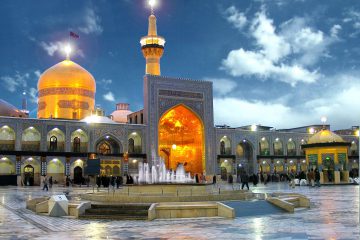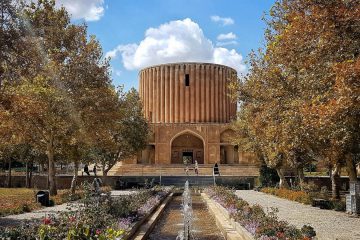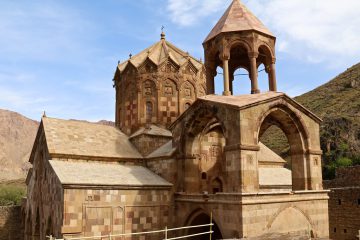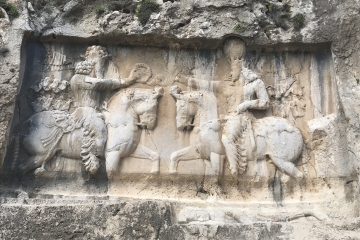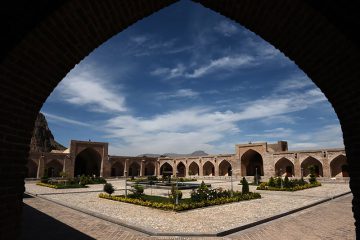
Kabud Mosque ! A beautiful Place in IRAN
Kabud Mosque: A Jewel of Tabriz’s History
Nestled in the heart of Tabriz, the Kabud Mosque, also known as the “Jahanshah” Mosque, stands as a testament to the rich history of this ancient city. According to the inscription on its portal, this magnificent mosque was commissioned in the year 870 AH (1465 AD) during the reign of Sultan Jahanshah, the mighty ruler of the Qaraqoyonlu dynasty, at the behest of his daughter. This historical marvel was not just a mosque; it encompassed several adjoining spaces, including a seminary, bathhouse, abbey, and library. Regrettably, only fragments of the mosque remain today, but they speak volumes about its grandeur.
One of the most striking features of Kabud Mosque is the diversity and intricacy of its tilework, along with various calligraphic styles adorning the structure. Notably, the azure mosaic tiles have earned it the moniker “Firuzeh-ye Islam” or the “Turquoise of Islam.” Tourists and archaeologists from around the world have been drawn to the mosque, captivated by the sheer brilliance of its tilework. Prominent figures such as Katip Chelebi and Tavernier have meticulously documented the mosque’s architectural splendor. Both of these scholars visited Tabriz between 1045 and 1046. Chelebi even asserted that the main portal of Kabud Mosque surpassed the Kasra Arch (Taq-e Kasra) in height, while Tavernier marveled at the two towering minarets alongside the unique portal and tilework.
Tragedy struck in 1779 when a devastating earthquake wrought havoc upon the mosque, resulting in the destruction of its dome and two minarets. However, the resilience of history prevailed. Reconstruction efforts commenced in 1939 and reached completion in 1979, thanks in large part to the skilled craftsmanship of Master Reza Me’maran.
Where is Persia?
A Glimpse into History
The Blue Mosque of Tabriz owes its existence to the vision of Jahan Shah, the ruler of the Kara Koyunlu dynasty. His wife, Khatun Jan Begum, played a pivotal role by establishing the endowment (vaqf) that financed the mosque’s construction. However, the tides of fate shifted a few years later as Jahan Shah and his Kara Koyunlu dynasty were overthrown by Uzun Hassan of the Ak Koyunlu, and Tabriz fell under new rule.
Jahan Shah’s daughter, Saleha Khatun, was entrusted with overseeing the remaining construction work, ensuring that her family’s legacy continued. During the reign of Yaqub bin Uzun Hasan, significant progress was made on the mosque’s mausoleum and its main components. However, it’s worth noting that the mausoleum remained unfinished in some aspects, as indicated by certain details within its interior.
When the Safavids established their dominance over Tabriz and declared it their capital, the Blue Mosque took on a new role, serving as a place of worship during the first half of the 16th century. However, the mosque faced a grave challenge in 1514 when the Safavids suffered defeat at the pivotal Battle of Chaldiran, leading to the occupation and looting of Tabriz by the Ottomans. It is recorded that the invaders made off with at least eight precious carpets, relocating them to Istanbul.
While it remains uncertain whether the Turks inflicted direct harm upon the mosque’s structure during their occupation, a series of earthquakes between the 16th and 18th centuries took their toll on the building. The earthquake of 1780, in particular, left the mosque severely damaged. By the 17th century, the once-magnificent Blue Mosque was described as “completely destroyed and abandoned.” In the 19th century, local residents of Tabriz scavenged the ruins for any remnants of value.
In the 20th century, during the era of the Pahlavi dynasty, a momentous decision was made to resurrect the mosque. The reconstruction was meticulously planned and executed under the supervision of Mohammad Reza Memaran Benam, a traditional architect hailing from Tabriz, who worked in close collaboration with the Iranian Organization of Cultural Heritages.

